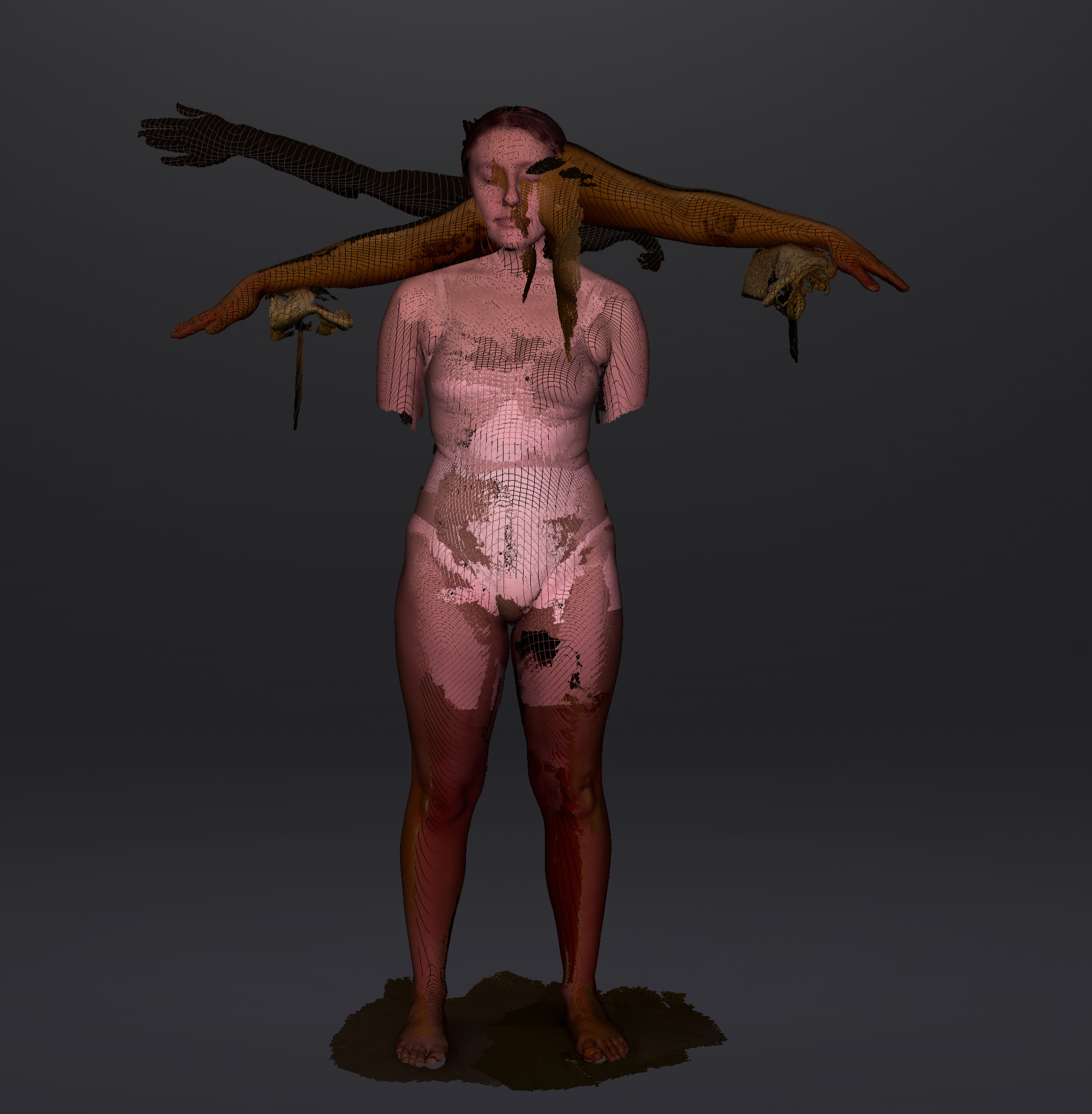Tech Transcendence
Jordan Metz
→MFA D+M 2023
“The new media are not bridges between man and nature—they are nature.”—Marshall McLuhan, The Book of Probes
The promise of virtual reality is to transcend the limitations of physical reality. Feminist anthropologist Roshanak Kheshti identifies a “will to shape-shift” as a driving force of humanity.1 She traces the cultural history of the tools humans have used to transcend:
The pre-Christian and early modern icons of shape-shifting (sorcery, alchemy, chimeras, magic, spirits, voodoo, hoodoo, ghosts, etc.) became pivotal to the paradigm shift to the Christian and colonial eras. Jesus’ resurrection comes to figure as exceptional and hence definitive of his divine power and an end is declared to the more commonplace, everyday forms of shape-shifting claimed by commoners. The mythos of resurrection elevated the birth and resurrection of Christ to the preeminent form of shape-shifting, rendering sorcery and magic as base and inauthentic.
In the digital age, technology has answered this need to shape-shift, to extend outside of ourselves. Our lives are expanded into and through computers. The virtual world is a real place where we perform unreal feats in an attempt to fulfill our need for connection and metaphysical expansion. While social media allows us to try on new personalities with people all around the world, virtual reality lets us try on entirely new bodies in shared, simulated spaces. Digital technology is the magic of our time, and that of the past century since the proliferation of electricity ushered in new mediums of communication. In the United States, the mystical nature of electricity infected the religious imaginary of the 19th century. Many fringe religious groups, including the more popular Spiritualists, harnessed the telegraph’s capacity to transmit messages over long distances as a performative tool to bridge the gap between the living and the dead. “Spiritualism represented an attempt to sacralize, and find transcendental meaning in, these new technologies.”2 What kind of spiritual practices will emerge from virtual reality?


Image by the author: Meshing with myself in Rhino.
Image by the author: Biblically accurate Jor
Today, virtual reality receives this kind of speculative attention about its capacity to transform humanity. VR offers a digital transcendence of our physical form, allowing us to embody the digital world like never before. We can seemingly be anywhere, in any body, with a host of novel corporeal capacities like flying, teleporting, and body modification. The urge to overcome the body’s limitations “is in part a response to the social, environmental and political climate, a realization that the human body, as well as the category human, is a limiting and exclusive container.”3 Spending our days in the crumbling social order we call the postmodern world, we reach for machines to transduce accumulations of energy into something immaterially new, destined for a human on the other side.
Technology-as-magic is a useful framework for thinking about the spiritual underpinnings imbued in the cultural imaginary of virtual reality. Facebook’s transition to Meta was coupled with statements attesting to the social power of VR spaces to, “let you socialize, learn,collaborate and play in ways that go beyond what we can imagine.”4 Here the social order of the metaverse is posited as hyper-speculative, beyond the current limits of human imagination (though, I would argue that there are none). This is clearly a hyperbolic statement, but it is not out of line with Meta’s self-designated mythology:
When Facebook launched in 2004, it changed the way people connect. Apps like Messenger, Instagram and WhatsApp further empowered billions around the world. Now, Meta is moving beyond 2D screens toward immersive experiences like augmented and virtual reality to help build the next evolution in social technology.
Facebook and other social media platforms just might be the tech equivalent of a holy resurrection, where humans upload themselves to an all-knowing, paternal cloud that enables them to signal beyond their physical locale. The self slips into the ether, and in a world where this transcendental space is controlled by corporate interests, the ether pulls you in deeper to the seeds of American capitalism. Referring to Baudriallard’s characterization of contemporary media as the complete substitution of the real for its signs, Kheshti recognizes “the analogical condition of postmodernity, where the copy exceeds the so-called real in both symbolic and material value.”5 In a fundamental way, VR fulfills our human need to expand and transform reality via simulation.
Technology, however, can be a faulty tool for metaphysical transcendence. Anyone who has experienced virtual reality can attest to the ways in which the physicality of the technology itself hinders complete immersion. The cumbersome equipment and overwhelming audiovisual effects tend to reveal the falseness of VR, rather than creating a new, believable reality. In essence, what VR does is allow the human body to interface with computer programs beyond the mouse and keyboard. We replaced these tools with controllers in each hand, and replaced the screen with a smaller screen strapped to the head so that we cannot look away. In this way, our tools keep us grounded in our bodies and thus, in the physical world. Unable to achieve complete transcendence of our form, we occupy the spaces in between.
NOTES
-
Roshanak Kheshti, Wendy Carlos’s Switched-on Bach (London: Bloomsbury Academic, 2019), 20.
-
Anthony Enns, “Spiritualist Writing Machines: Telegraphy, Typtology, Typewriting.” communications +1 (September 16, 2015): 1.
-
Kheshti. Wendy Carlos’s Switched-on Bach, 30
-
Meta. “About Meta.” https://about.meta.com, accessed May 17, 2022.
-
Kheshti, Wendy Carlos's Switched-on Bach, 35.
Jordan Metz is self-replicating with machines.